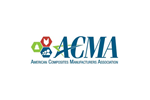Wind energy leaders present recommendations for recycling wind turbine blades
The EuCIA, Cefic and WindEurope recently released a joint report aimed to accelerate wind turbine blade recycling efforts.

Source | WindEurope
The European Composites Industry Association (EuCIA, Brussels, Belgium), WindEurope (Brussels) and the European Chemical Industry Council (Cefic, Brussels) recently released a new report presenting their recommendations for the recycling of wind turbine blades.
“The first generation of wind turbines are now starting to come to the end of their operational life. Many of them will be replaced by modern, more efficient turbines,” says Giles Dickson, WindEurope CEO. “We estimate that 14,000 wind turbine blades will be decommissioned in Europe by 2023. The recycling of these old blades is a top priority for us, as we are committed to the principles of a circular economy. Our collaboration with Cefic and EuCIA is key to scaling up the necessary recycling technologies and value chains.”
The report, titled “Accelerating Wind Turbine Blade Circularity,” presents several key conclusions:
- There are various existing technologies to recycle wind turbine blades, but these solutions are not yet all available at industrial scale and economically competitive.
- Today, the main technology for recycling composite waste is through cement co-processing. WindEurope, Cefic and EuCIA strongly support increasing and improving composite waste recycling through the development of alternative recycling technologies. This requires increased research and innovation funding.
- At the same time, existing treatment routes such as cement co-processing must be deployed more widely to deal with the growing waste streams.
- The best strategy for wind turbine blades is one that combines design, testing, maintenance, upgrades and the appropriate recycling technology to ensure the maximum value of the material is retrieved throughout its lifetime. This requires a better understanding of the environmental impacts associated with the choice of materials during design and with the different waste treatment methods at end-of-life.
- Finally, composite recycling is a cross-sector challenge. An active engagement from all the composite-using sectors and authorities is required to develop cost-effective solutions and strong European value chains.
“Investing in renewable energy production and circular solutions should be one of the key drivers of the post-COVID-19 economic recovery,” says Marco Mensink, Cefic director general. “I am very proud of the partnership we have built with the wind energy supply chain to come up with an effective solution to recycling wind blades. This shows that cross-industry and value chain alliances are a very powerful tool for speeding up innovation and scaling up cutting edge technologies.”
“We are committed to support the composites industry in finding reliable recycling technologies,” adds Roberto Frassine, president of EuCIA. “Our collaboration with WindEurope and Cefic is a great example of how we can make progress towards establishing solutions that are both sustainable and economically viable. EuCIA has been working hard to better estimate the amount of End-of-life waste of composites in Europe. Through WindEurope we were able to validate our findings for wind markets, which will be the basis for further strategic programs and actions to promote composites recycling.”
Related Content
-
Materials & Processes: Fibers for composites
The structural properties of composite materials are derived primarily from the fiber reinforcement. Fiber types, their manufacture, their uses and the end-market applications in which they find most use are described.
-
Recycling end-of-life composite parts: New methods, markets
From infrastructure solutions to consumer products, Polish recycler Anmet and Netherlands-based researchers are developing new methods for repurposing wind turbine blades and other composite parts.
-
Materials & Processes: Composites fibers and resins
Compared to legacy materials like steel, aluminum, iron and titanium, composites are still coming of age, and only just now are being better understood by design and manufacturing engineers. However, composites’ physical properties — combined with unbeatable light weight — make them undeniably attractive.

.jpg;width=70;height=70;mode=crop)











.jpg;maxWidth=300;quality=90)

